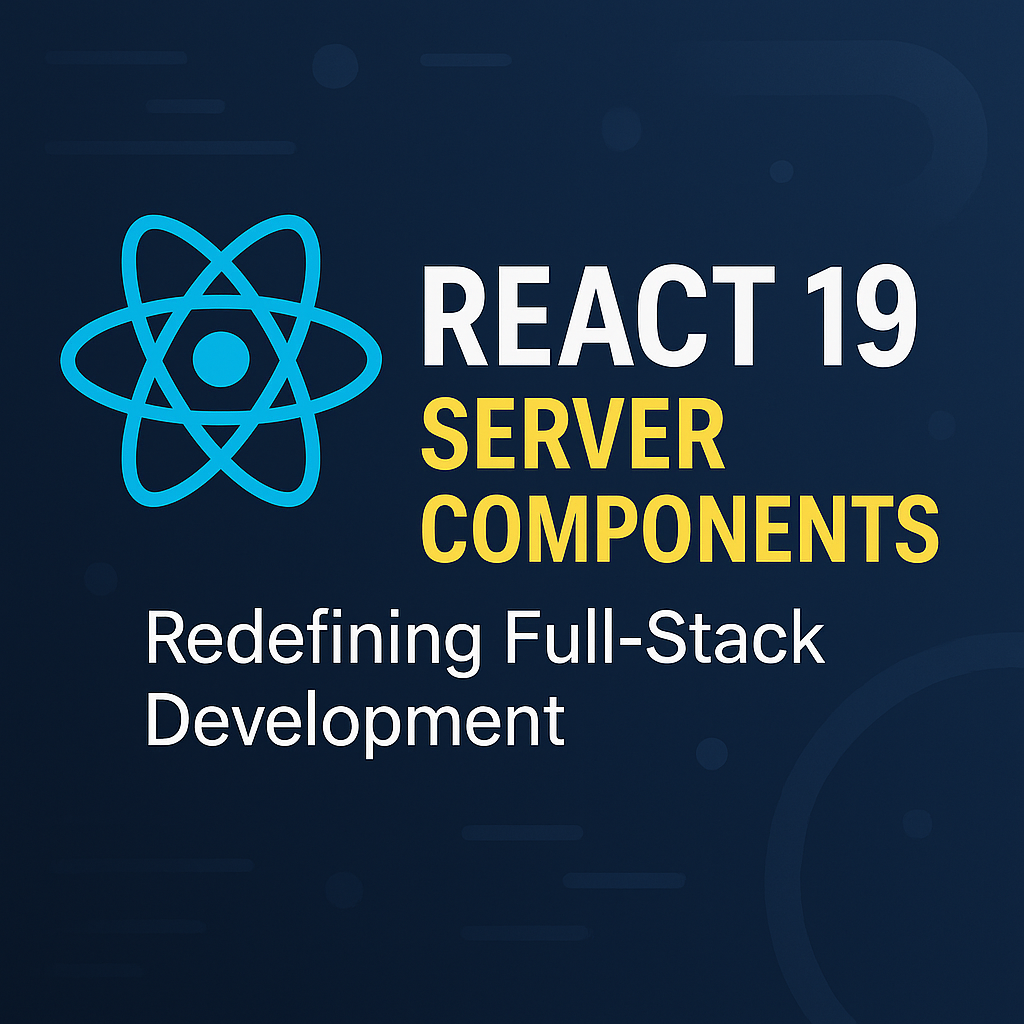
React 19 introduces a monumental shift in how developers approach full-stack applications, thanks to Server Components, Server Actions, and a robust integration with frameworks like Next.js 15. In this blog, we will explore what makes these features transformative, how they improve performance, security, and developer experience, and why adopting them early can give your application a strategic edge.
What Are React 19 Server Components?
React 19 Server Components are designed to render content entirely on the server, sending only serialized HTML to the client without any JavaScript execution. This represents a fundamental improvement over traditional client-rendered components, making them lighter, more secure, and more efficient.
Key Benefits:
- Zero client-side JavaScript for server components
- Improved security: No sensitive code or API logic is exposed to the client
- Smaller bundle size: Faster page loads and better Lighthouse scores
- Direct server resource access (e.g., databases, file systems)
React 19 distinguishes Server Components from Client Components through the ‘use client’ directive. If it’s missing, the component defaults to a Server Component.
Usage Tip: You can use a Server Component to fetch data (e.g., user profile) and then pass it as props to a Client Component responsible for rendering or user interactions.
Server Actions in React 19: Mutations Without APIs
One of the most exciting features in React 19 Server Actions is the ability to perform server-side mutations without writing API endpoints. These asynchronous functions, defined in files marked with ‘use server’, can be directly referenced in form elements or Client Components.
Example Use Case:
// actions.server.js
'use server';
import { db } from '@/lib/db';
export async function updateProfile(data) {
await db.user.update({
where: { id: data.id },
data: { bio: data.bio },
});
}
// ClientComponent.jsx
'use client';
import { updateProfile } from '@/actions/actions';
<form action={updateProfile}>
<textarea name="bio"></textarea>
<button type="submit">Save</button>
</form>This removes boilerplate, reduces cognitive load, and improves DX (Developer Experience).
Server Actions: Core Advantages
- No need for REST or GraphQL layers
- Integrated form handling with optimistic UI support
- Secure by design—functions are server-bound
Security Note: You must still authenticate and validate all input server-side. Treat Server Actions with the same care as API endpoints.
How React 19 Improves Performance
React 19’s server-first paradigm, paired with Next.js 15’s streaming and caching capabilities, enables:
- Progressive rendering with <Suspense>
- Out-of-the-box caching of async server responses
- Reduced TTFB (Time to First Byte) and JS execution time
A component wrapped in <Suspense> sends fallback HTML immediately and then progressively streams data. This allows React 19 Server Components to feel instant—even when fetching from slow databases.
Mixing Server and Client Components
In a React 19 + Next.js 15 app:
- You can embed Client Components inside Server Components.
- But once a component is marked with ‘use client’, all its children must also be client-compatible.
This encourages you to architect your app with clear separation of concerns:
- Server Components handle data fetching, security, and layout
- Client Components handle interactivity, state, and local effects
Real-World Example: Editable Bio Page
A classic full-stack use case is editing user bios:
- EditBioPage (Server Component) fetches user data
- EditBio (Client Component) renders a <textarea> and uses useOptimistic() for real-time UX
- Submits via a Server Action that updates the DB and revalidates cache
This pattern completely replaces the need for API routes or client-fetching logic like useEffect().
Final Thoughts: React 19 Is the Full-Stack Future
React 19 Server Components and Server Actions aren’t just incremental updates—they reshape how we think about full-stack architecture. With reduced complexity, improved performance, and top-notch security, these features make React 19 the best time yet to embrace server-first development.
If you’re building apps in 2025 and beyond, React 19 Server Components and Server Actions should be your default strategy.
Want to see these concepts in action? Try building a bio editor, a contact form, or even a real-time dashboard using React 19. You’ll be amazed at how little code you write and how fast your app feels.

